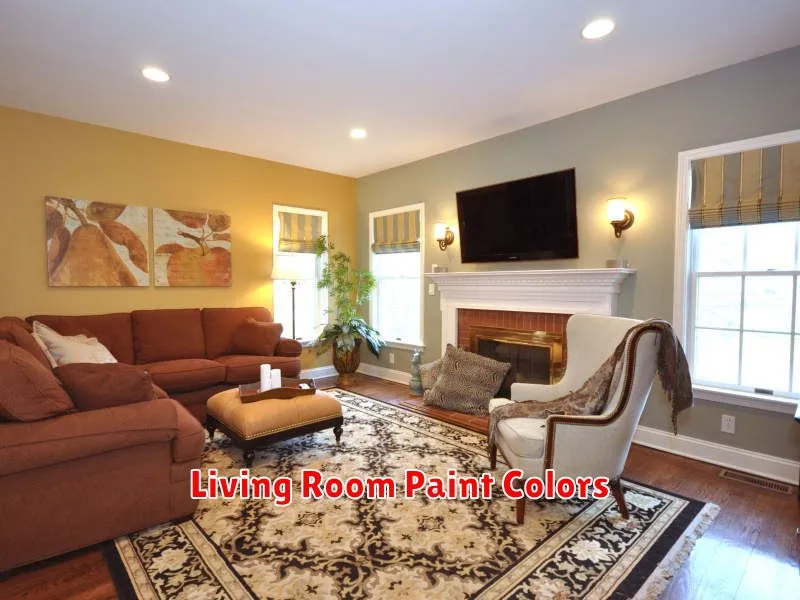Ready to revamp your living room for 2024? We’ve got you covered with 10 modern living room paint ideas that are fresh, stylish, and totally on-trend. This year is all about embracing bold colors, experimenting with unexpected shades, and creating a space that truly reflects your personal style. Whether you’re aiming for a calm and serene atmosphere or a vibrant and energetic vibe, our curated list of modern paint colors will help you transform your living room into the stylish sanctuary you’ve always dreamed of. Get ready to be inspired!
Earthy Terracotta
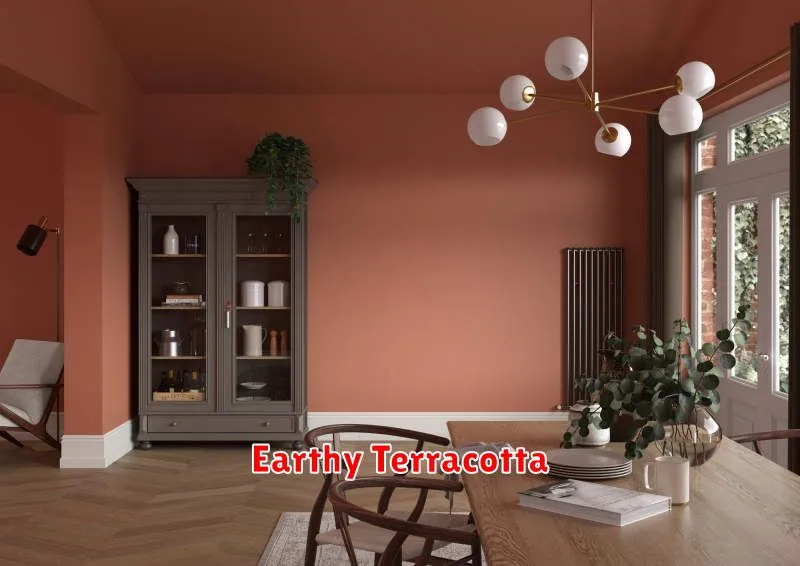
Terracotta, meaning “baked earth” in Italian, is more than just a color; it’s a feeling. It evokes a sense of warmth, grounding, and connection to the natural world. This rich, earthy hue has been a staple in design for centuries, and its enduring appeal lies in its versatility and inherent sophistication.
The beauty of terracotta lies in its range. From the deep, reddish browns of sun-baked clay to the lighter, almost orange tones, it offers a spectrum of possibilities for creating a unique aesthetic. This makes it incredibly adaptable to different styles, seamlessly blending into both rustic and modern settings.
In interior design, terracotta can be a stunning focal point. Imagine a terracotta-colored accent wall, providing a warm backdrop for your favorite artwork or furniture. Or perhaps a collection of terracotta pots filled with lush greenery, bringing the outdoors in. The possibilities are truly endless.
Beyond walls and accessories, terracotta flooring offers a durable and visually appealing option. Its natural texture adds character and warmth to any room, creating a sense of comfort and grounding. Consider pairing terracotta floors with natural wood furniture and textiles for a cohesive and inviting space.
The versatility of terracotta extends to fashion as well. Terracotta-colored clothing items, whether a flowing dress or a stylish top, add a touch of earthy elegance to any wardrobe. The color complements a wide range of skin tones and can be styled up or down with ease.
Whether you’re looking to incorporate terracotta into your home décor, your wardrobe, or simply appreciate its aesthetic appeal, this timeless color continues to inspire and delight. Its connection to nature and its rich, warm tones make it a truly enduring design classic.
Bold Emerald Green
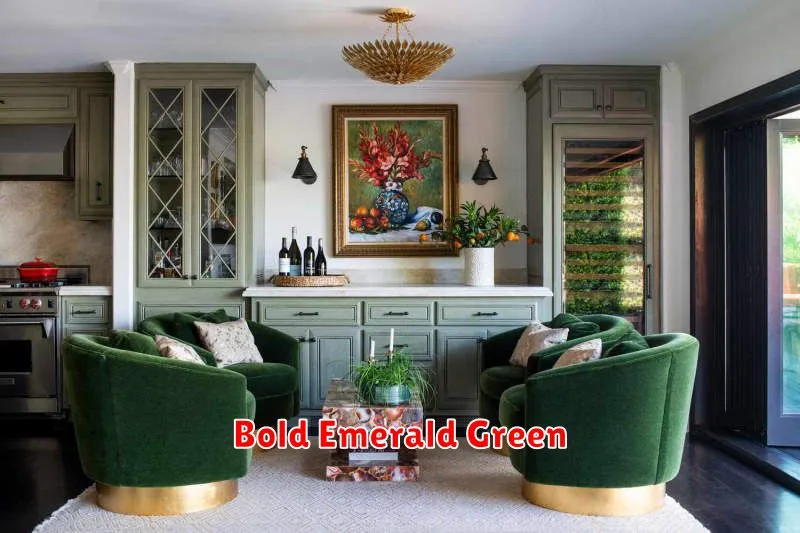
Emerald green is having a moment. This vibrant, jewel-toned hue is popping up everywhere, from fashion runways to home décor. But what makes emerald green so captivating, and how can you incorporate it into your own style?
The allure of emerald green lies in its versatility. It’s a color that can feel both sophisticated and playful, depending on how it’s used. Its depth allows it to work in a variety of settings, from the formal elegance of a dinner party to the relaxed comfort of a weekend brunch.
For those feeling bold, a head-to-toe emerald green ensemble can be incredibly striking. Imagine a flowing emerald green maxi dress paired with gold jewelry, or a tailored emerald green suit for a powerful statement. Don’t be afraid to experiment with different shades and textures of emerald green to find what best suits your personal style.
If a full-on emerald green look feels too daring, start with smaller accents. A simple emerald green scarf, handbag, or pair of shoes can add a pop of color to any outfit. Consider incorporating emerald green into your home décor with throw pillows, vases, or artwork. The possibilities are endless!
The key to successfully incorporating emerald green is to balance it with other colors. It pairs beautifully with neutrals like cream, beige, and gray, as well as with other jewel tones like ruby red and sapphire blue. Experiment with different combinations to find what works best for you.
Ultimately, emerald green is a color that embodies confidence and sophistication. Whether you’re a fashion enthusiast or a home décor aficionado, there are countless ways to incorporate this stunning hue into your life and let its vibrant energy shine through.
Muted Navy Blue
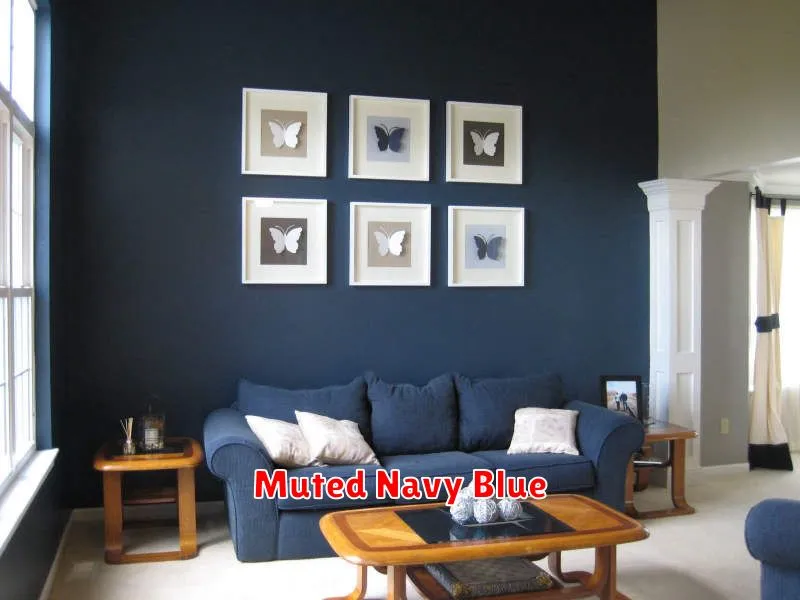
Muted navy blue is having a moment. This sophisticated shade, a slightly desaturated and softer take on classic navy, offers a unique blend of elegance and versatility. It’s the perfect choice for those seeking a color that’s both timeless and trend-forward.
Unlike its bolder counterpart, muted navy blue possesses a calming and understated quality. Its subtle undertones make it incredibly adaptable to various design aesthetics, from minimalist modern to cozy rustic. This versatility is a key factor in its rising popularity.
One of the greatest strengths of muted navy blue is its ability to work beautifully with a wide range of colors. It pairs exceptionally well with creamy whites and warm neutrals, creating a serene and sophisticated palette. For a more dramatic effect, consider contrasting it with vibrant jewel tones like emerald green or ruby red.
In interior design, muted navy blue can be used to create a sense of calm and tranquility in bedrooms and living rooms. Used on walls, it can make a room feel both spacious and intimate. As an accent color, it adds depth and richness to a neutral palette.
Beyond interiors, muted navy blue finds its place in fashion as well. This shade is flattering on a wide range of complexions and lends itself to both casual and formal wear. Imagine a beautifully tailored blazer, a flowing maxi dress, or a chic sweater – the possibilities are endless.
Whether you’re updating your home décor or refreshing your wardrobe, consider the timeless appeal of muted navy blue. Its understated elegance and versatile nature make it a truly worthwhile investment in style and sophistication.
Soft Grey Tones
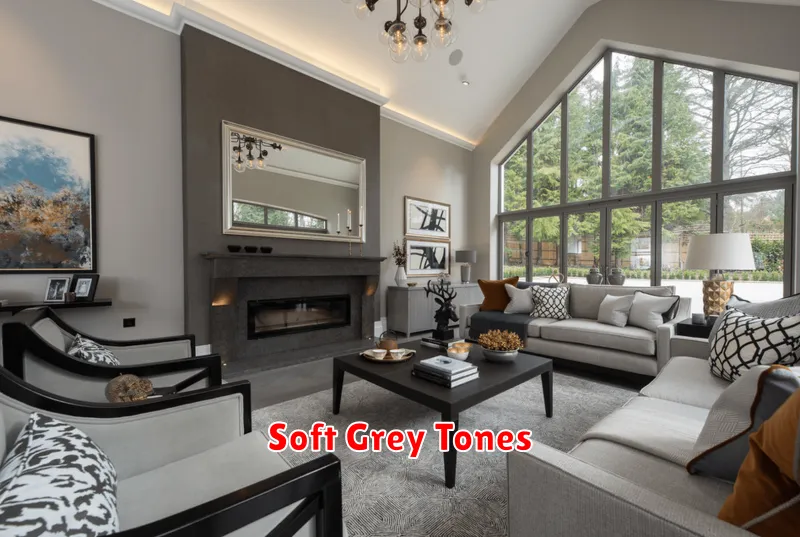
Grey, often overlooked as a neutral, is experiencing a resurgence in popularity. It’s no longer just a backdrop; it’s a statement color capable of creating a wide range of moods and styles. From cool, sophisticated spaces to warm, inviting havens, the versatility of grey is undeniable.
The beauty of grey lies in its subtlety. Unlike bolder hues that can overwhelm a room, soft grey tones offer a calming effect, promoting tranquility and relaxation. They create a sense of serenity, making them ideal for bedrooms, living rooms, and even bathrooms.
Soft greys work exceptionally well with a variety of other colors. Pair them with crisp whites for a clean, modern aesthetic, or combine them with warm woods and natural textures for a cozy, rustic feel. The possibilities are endless. Consider incorporating muted pastels for a touch of femininity or jewel tones for a touch of drama.
When choosing your shade of grey, consider the amount of natural light in the room. Lighter greys work best in spaces with limited sunlight, while darker greys can add depth and sophistication to brighter rooms. Remember to consider the undertones of your chosen grey; some lean towards blue, while others have warmer, beige undertones. This subtle difference can significantly impact the overall feel of the space.
Whether you choose a light, airy silver or a deep charcoal, remember that grey is a versatile and elegant choice for any room in your home. Embrace its versatility and let it become the foundation of your design.
Experiment with different shades and textures to find the perfect grey palette for your personal style. From soft, muted tones to striking, dramatic hues, grey offers a spectrum of possibilities, waiting to be discovered.
Neutral Warm Beige
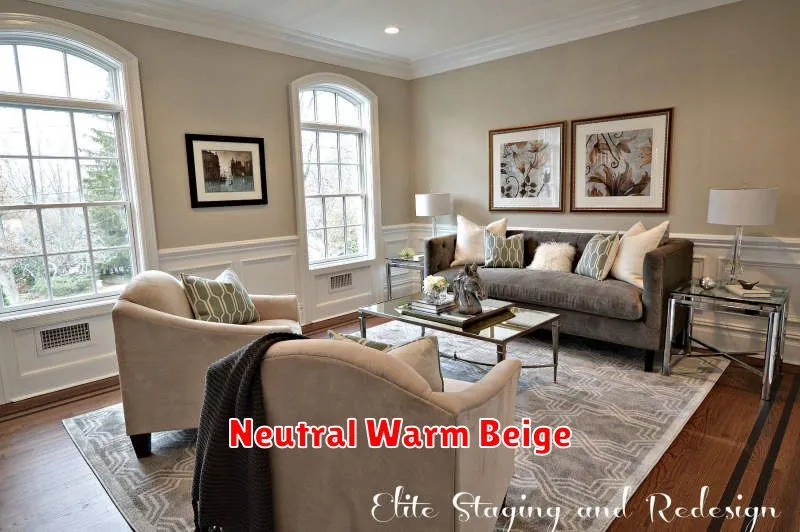
Beige, a seemingly simple color, holds a surprising amount of versatility in the world of interior design and fashion. Often overlooked as bland, beige, when chosen thoughtfully, can create a sophisticated and calming atmosphere. This article will delve into the nuances of a specific beige shade: the neutral warm beige.
Unlike cooler beiges that can lean towards gray, a neutral warm beige incorporates subtle hints of yellow and brown. This subtle warmth provides a feeling of comfort and coziness, making it an ideal choice for spaces where relaxation is key. Think bedrooms, living rooms, or even a calming home office.
The “neutral” aspect is crucial. It implies that the warmth is subdued, avoiding the overly intense yellow tones that some might find overwhelming. This allows the color to act as a perfect backdrop, allowing other colors and textures to shine. Imagine a neutral warm beige wall, accented with vibrant artwork or plush, textured furniture.
Where to use Neutral Warm Beige:
- Walls: Creates a calming and sophisticated foundation for any room.
- Furniture: A neutral warm beige sofa or armchair provides a timeless and versatile piece that can be easily styled.
- Accessories: Throws, cushions, and rugs in this shade add warmth and texture without overpowering the space.
- Flooring: A warm beige floor can create a sense of spaciousness and comfort, especially in combination with lighter wall colors.
Pairing Neutral Warm Beige:
Its versatility extends to its pairing potential. It works beautifully with:
- Deep blues and greens: Creates a serene and balanced palette.
- Earthy tones: Enhances the natural and organic feel of the space.
- Metallic accents: Gold, bronze, or copper add a touch of elegance and warmth.
- Whites and creams: Provides a bright and airy contrast.
In conclusion, neutral warm beige is more than just a color; it’s a versatile design element that can transform a space into a haven of comfort and sophistication. Its subtle warmth and neutrality make it a timeless choice that will endure for years to come.
Two-Tone Combinations
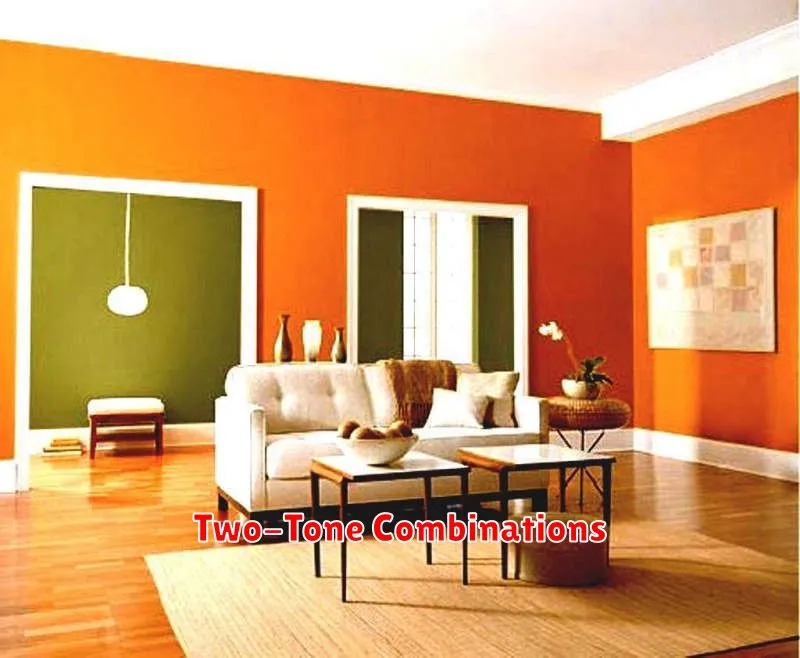
Choosing the right two-tone combination can dramatically impact the overall aesthetic of a design. Whether you’re working on a website, a piece of art, or even a fashion statement, understanding the principles of color harmony is key. There are countless possibilities, but some pairings consistently deliver stunning results.
Analogous Colors are a great starting point. These are colors that sit next to each other on the color wheel, creating a sense of harmony and visual flow. Think blues and greens, or oranges and yellows. The subtle variations offer a cohesive yet interesting look. This approach often results in a calming and natural feel.
Complementary Colors offer a more vibrant and contrasting approach. These colors sit directly opposite each other on the color wheel, such as red and green, or blue and orange. The high contrast creates energy and visual excitement, but it’s crucial to use them strategically to avoid overwhelming the viewer. One color should often dominate, acting as a background or base, while the other is used as an accent.
Triadic Colors involve three colors evenly spaced on the color wheel, for example, red, yellow, and blue. This combination offers a balanced and dynamic feel. It allows for a wider range of color expression compared to analogous or complementary pairings. However, careful consideration of value and saturation is vital to avoid a jarring effect.
Monochromatic Colors use different shades and tints of a single color. This approach creates a sophisticated and elegant look. The subtle variations in lightness and darkness add depth and texture without sacrificing the overall sense of unity. It’s a versatile choice, suitable for various design contexts.
Ultimately, the best two-tone combination depends on the specific project and desired mood. Experimentation is encouraged! Consider the context, the intended message, and your personal preferences. Don’t be afraid to step outside the box and discover unexpected harmonies.
Charcoal Accent Walls
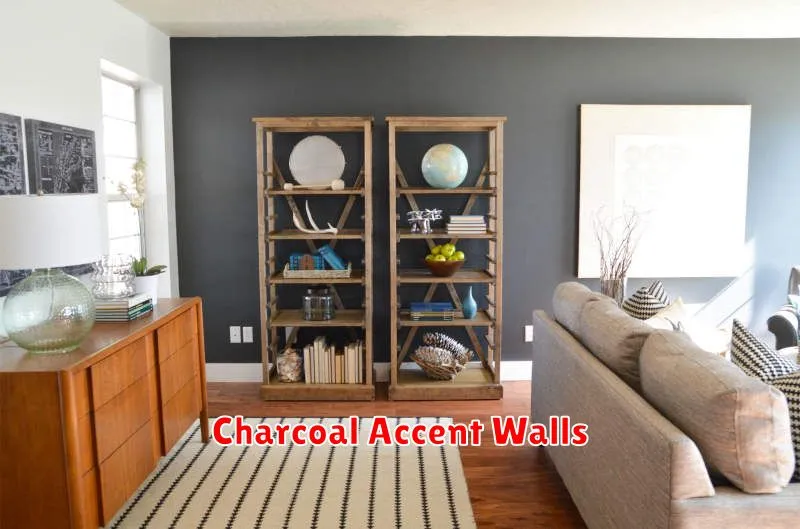
Adding a charcoal accent wall to your home is a surprisingly versatile design choice. It can instantly elevate a room’s aesthetic, creating a dramatic yet sophisticated look that works in a wide range of styles, from modern minimalist to rustic farmhouse.
The dark hue of charcoal provides a fantastic backdrop for showcasing artwork, furniture, and other decorative elements. Its richness adds depth and visual interest, making a space feel more grounded and luxurious. The key to success lies in understanding how to balance the darkness with other lighter colors and textures in the room.
Consider the lighting. Charcoal walls absorb light, so it’s crucial to ensure your room has adequate illumination. Think strategically placed lamps, overhead lighting, and even reflective surfaces to bounce light around the space and prevent it from feeling too gloomy. Natural light is your best friend; if possible, position your charcoal wall where it will receive ample sunlight.
Texture plays a vital role. The matte finish of a charcoal wall can sometimes feel a bit flat. Adding textural elements, such as a chunky knit throw, a woven rug, or even a textured wallpaper on an adjacent wall, can create a sense of visual warmth and interest that prevents the charcoal from feeling overwhelming.
Color coordination is key. Pairing charcoal with complementary colors is essential. Think about incorporating lighter neutrals like cream, beige, or off-white to balance the darkness. Metallic accents, such as gold or brushed nickel, can add a touch of elegance and sophistication. Even pops of bright color can create a stunning contrast, but use them sparingly to avoid overwhelming the space.
Ultimately, a charcoal accent wall offers a unique opportunity to showcase your personal style and create a space that’s both stylish and inviting. With careful planning and consideration of lighting, texture, and color, you can achieve a sophisticated and impactful design that will transform your home.
Bright White with Pastels
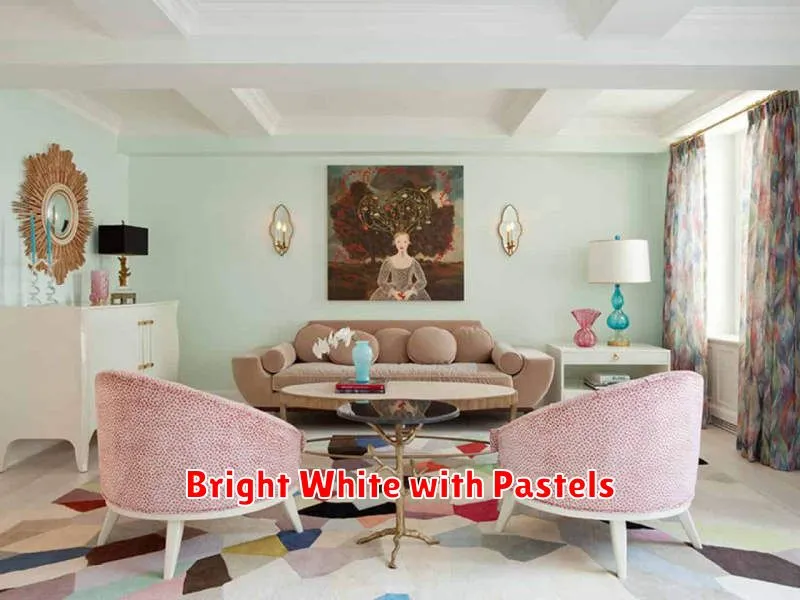
This spring, we’re seeing a beautiful trend emerge: the pairing of bright white with pastel shades. This unexpected combination creates a look that is both fresh and sophisticated, offering a delightful contrast of boldness and softness.
The stark white acts as a perfect canvas, allowing the delicate pastel hues to truly shine. Think blush pinks, lavender purples, mint greens, and soft yellows. These colors, often associated with femininity and tranquility, are elevated when juxtaposed against the crispness of white. The overall effect is one of airy elegance and understated glamour.
This trend translates beautifully across various aspects of design, from fashion and home decor to wedding themes and graphic design. In fashion, a crisp white shirt or dress can be paired with a pastel-colored skirt or trousers, creating a polished and modern look. Similarly, a white background in home decor can be enhanced with pastel-colored throw pillows, blankets, or artwork.
The beauty of this color palette lies in its versatility. Whether you prefer a minimalist aesthetic or a more maximalist approach, the combination of bright white and pastels offers endless possibilities for creative expression. It’s a trend that is both easy to implement and incredibly stylish, making it a perfect choice for anyone looking to refresh their style this season.
For a truly stunning effect, consider incorporating textures. A chunky knit pastel sweater against a smooth white backdrop, or a rough linen pastel tablecloth on a white table, adds depth and visual interest. Don’t be afraid to experiment with different shades and textures to find the perfect combination that suits your personal style.
So, embrace the bright white and pastel trend this spring. It’s a delightful way to infuse your life with a touch of springtime freshness and elegance. From subtle accents to bold statements, the possibilities are truly endless!
Matte Black Highlights
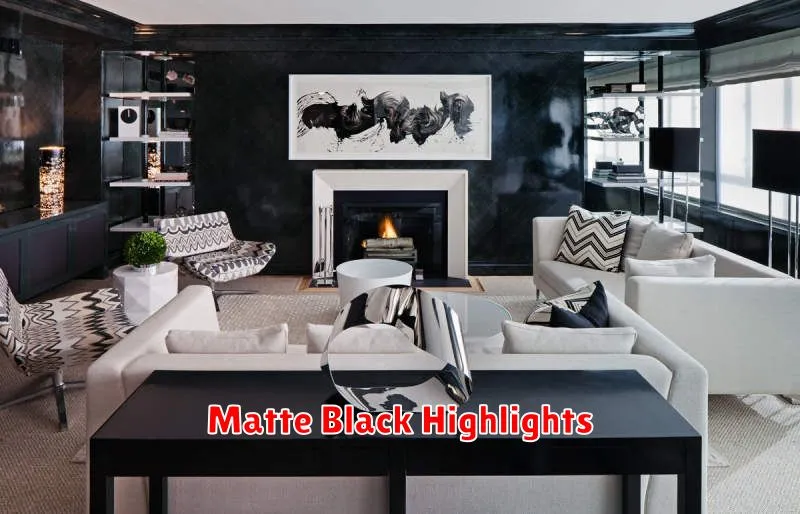
Matte black has become a dominant trend in design, offering a sophisticated and modern aesthetic. Its versatility allows it to be incorporated into a wide range of applications, from architecture and automotive design to interior décor and fashion.
One of the key reasons for its popularity is its versatility. Matte black can be both bold and understated, depending on its application and surrounding elements. It pairs well with a variety of colors and textures, creating a striking contrast or a subtly sophisticated backdrop.
In interior design, matte black fixtures and accents can add a touch of modern elegance to any space. Think sleek black kitchen cabinets, sophisticated black lighting, or minimalist black furniture. The absence of shine means it won’t reflect light harshly, creating a calming and less cluttered feel.
The automotive industry has also embraced matte black, using it to create a look that is both powerful and understated. The deep, non-reflective surface adds a sense of luxury and mystery to vehicles, making it a popular choice for customization.
Beyond these, matte black finds its place in fashion as well, appearing on clothing, accessories, and footwear. Its understated elegance elevates everyday pieces and allows for creative layering and textural play.
However, it’s important to note that matte black does require careful consideration. Its lack of shine can sometimes make it appear less clean than a glossy finish, requiring more frequent cleaning to maintain its appearance. Additionally, the subtle nature of matte black means it’s best used strategically to avoid overwhelming a space.
In conclusion, matte black’s timeless appeal and adaptability make it a popular choice across numerous disciplines. Its ability to create both bold statements and subtle elegance ensures its continued relevance in the world of design.
Soft Blush Pink
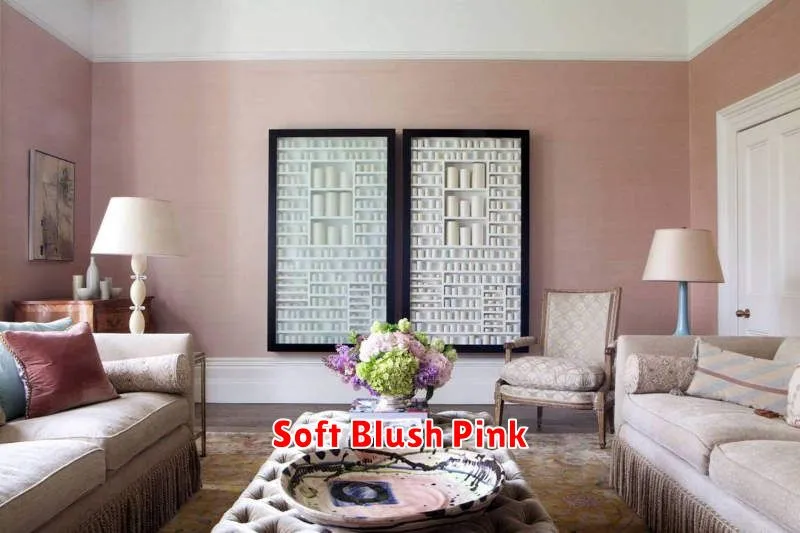
Soft blush pink is a versatile and universally flattering shade that adds a touch of elegance and femininity to any space. Its subtle hue makes it perfect for a variety of design styles, from minimalist modern to romantic shabby chic.
The beauty of this color lies in its subtlety. It’s not overpowering, allowing other elements in the room to shine. Whether used as a wall color, in textiles, or as an accent, soft blush pink creates a calming and inviting atmosphere.
Consider using soft blush pink in your bedroom for a relaxing and peaceful sanctuary. Pair it with crisp white bedding and natural wood furniture for a sophisticated and serene feel. Alternatively, in a living room, it can create a warm and welcoming space, especially when complemented by metallic accents like rose gold or copper.
For a bolder statement, consider using blush pink as an accent color. A blush pink sofa, armchair, or rug can instantly add a touch of femininity and charm to a neutral space. This allows you to incorporate the color without committing to it on a larger scale.
When choosing the perfect shade of soft blush pink, consider the level of light in your space. In rooms with ample natural light, a lighter shade will appear brighter and airier. In rooms with less light, a slightly deeper shade might be more flattering and prevent the room from feeling too washed out.
Ultimately, soft blush pink is a timeless and chic color choice that can transform any room into a haven of tranquility and style. Its adaptability makes it a perfect choice for those seeking a delicate yet impactful color in their home décor.

